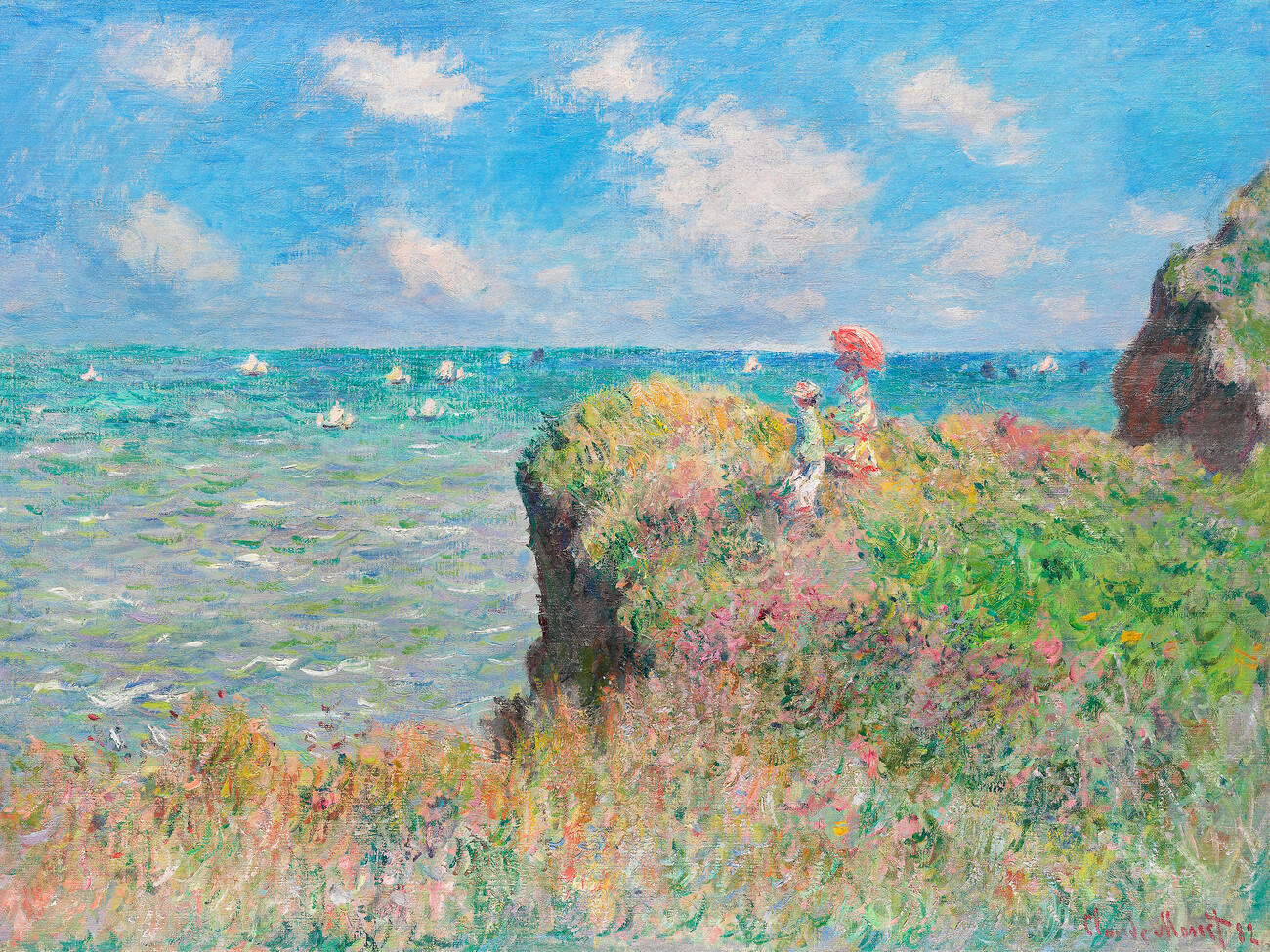Claude Monet: Capturing the Beauty of Nature in Impressionist Landscapes
Claude Monet, a pioneering figure in the Impressionist movement, revolutionized the way we view and represent the natural world. His art is characterized by a distinctive style that captures the fleeting effects of light and color in landscapes. Monet’s dedication to portraying nature’s beauty through innovative techniques has left an indelible mark on the art world. In this exploration of Monet’s work, we’ll delve into his artistic journey, signature techniques, and some of his most celebrated landscapes.


The Birth of Impressionism
Early Life and Influences
- Background: Born in Paris in 1840, Claude Monet began his artistic journey at a young age. His early experiences in art were influenced by his studies at the secondary school of the arts and his exposure to the works of Eugène Boudin and Johan Barthold Jongkind, who introduced him to plein air painting.
- Influence of Nature: Monet’s love for nature was nurtured by his frequent visits to the Normandy coast and the countryside. His early works, including those from his time in the military and at the School of Fine Arts, reflect a growing fascination with capturing the natural environment.
Impressionist Movement
- Formation of the Movement: In the late 19th century, Monet, along with other artists like Pierre-Auguste Renoir and Edgar Degas, founded the Impressionist movement. This group sought to break away from the rigid academic standards of the time and focus on capturing the essence of moments through light and color.
- Origin of the Name: The term "Impressionism" originated from Monet’s painting Impression, Sunrise (1872). The title, which initially carried a derogatory connotation, eventually became synonymous with the movement and its emphasis on the subjective experience of light and color.
Signature Techniques and Innovations
Plein Air Painting
- Outdoor Painting: Monet’s commitment to painting en plein air (outdoors) was revolutionary. Unlike traditional studio work, plein air painting allowed Monet to capture the immediate and transient effects of natural light and atmosphere.
- Effect of Light: Monet’s technique involved working quickly to capture the shifting light and colors of the landscape. This approach resulted in vibrant, dynamic compositions that conveyed the essence of the scene rather than its exact details.
Brushwork and Color
- Distinctive Brushstrokes: Monet employed loose and spontaneous brushstrokes to depict the play of light on surfaces. His brushwork often created a textured, almost abstract quality that conveyed movement and vitality.
- Color Palette: Monet’s use of color was innovative. He often used pure, unblended colors applied side-by-side, allowing the viewer’s eye to mix the colors from a distance. This technique enhanced the luminosity and vibrancy of his paintings.
Series Painting
- Repeating Themes: Monet frequently painted the same subject at different times of the day and in various weather conditions. His series paintings, such as those of the Water Lilies, Haystacks, and Rouen Cathedral, explore the changing light and atmosphere, revealing his fascination with the passage of time and natural variability.
- Examples: The Water Lilies series, painted at Monet’s garden in Giverny, exemplifies his exploration of reflection and light. These works are celebrated for their serene beauty and abstract quality.
Celebrated Landscapes and Masterpieces
The Water Lilies
- Giverny Garden: Monet’s garden at Giverny became a central theme in his later work. The Water Lilies series, featuring the tranquil pond and its floating flora, is among his most iconic contributions.
- Artistic Impact: These paintings are renowned for their large scale and immersive quality. Monet’s depiction of the water surface reflects his interest in capturing the ever-changing effects of light and water.
Haystacks
- Seasonal Variations: The Haystacks series, painted in the fields around Monet’s home in Argenteuil, showcases the artist’s exploration of light and color throughout different seasons and times of day.
- Visual Impact: The series is notable for its study of how light affects the perception of form and color, with each painting providing a unique perspective on the same subject.
Rouen Cathedral
- Gothic Architecture: Monet’s Rouen Cathedral series captures the façade of the cathedral under various lighting conditions. The paintings emphasize the interplay between light, shadow, and the intricate details of the gothic architecture.
- Artistic Experimentation: This series highlights Monet’s fascination with capturing the changing effects of light and atmosphere on architectural forms.
Legacy and Influence
Enduring Impact
- Influence on Modern Art: Monet’s innovative techniques laid the groundwork for future art movements, including Abstract Expressionism and Modernism. His focus on light, color, and perception influenced a wide range of artists.
- Public Recognition: Monet’s work gained widespread recognition during his lifetime and continues to be celebrated in major museums and galleries around the world. His contributions to art history are integral to our understanding of Impressionism and landscape painting.
Cultural and Artistic Significance
- Cultural Icon: Monet’s paintings remain a symbol of the Impressionist movement and its emphasis on capturing the ephemeral beauty of nature. His work resonates with audiences for its ability to evoke emotion and convey the essence of a moment.
- Ongoing Exhibitions: Monet’s work is frequently featured in exhibitions and retrospectives, offering new generations the opportunity to experience his artistic vision and contribution to art.


Claude Monet’s artistry transformed the representation of nature and established a new approach to painting that continues to inspire and captivate. Through his pioneering techniques and commitment to capturing the transient beauty of the natural world, Monet not only defined the Impressionist movement but also left a lasting legacy that endures in the art world today. His landscapes, characterized by their vibrant color and dynamic brushwork, remind us of the fleeting beauty of nature and the power of art to convey the essence of our world.












